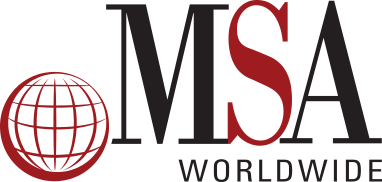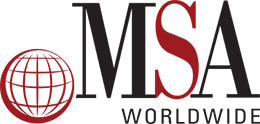The criteria used in determining franchisability should be appropriate for your industry and business, and will generally fall into these interrelated and interdependent major buckets.
By Michael Seid, Managing Director, MSA Worldwide
The underlying business and systematization
In Part One of the Threshold Analysis, we explained how becoming a franchisor is like starting a new business venture, and outlined a simple test for franchisability. In this Part Two, we cover how to determine franchisability criteria for your Threshold Analysis.
A Threshold Analysis is designed to explore franchising in the context of other distribution strategies. When properly conducted it should also provide an assessment of the advantages and disadvantages of other types of expansion available to the company.
Franchising is, after all, simply an alternative expansion strategy, and few franchisors today use franchising at the exclusion of all other strategies available.
Conducting a Threshold Analysis is not a legal requirement before franchising. Its sole purpose is to assist management in deciding whether franchising is a viable business option for them to invest in. It is not a strategic plan, and is not sufficient to be used for the design and development of the franchise system or as a baseline for drafting the required legal documents.
The criteria used in determining franchisability should be appropriate for your industry and business, and generally fall into a few interrelated and interdependent major buckets, including:
- An analysis of the underlying business
- The quality of the company’s products and services
- The competitiveness of the “retail” offering
- The ability/willingness of the franchisor to localize the products and services, if required
- How well the business can be systematized for new and existing franchisees
- The capability of the company to transfer the necessary skills to franchisees, management and staff
- The skills and any professional licenses required to operate the business at the retail level
- The background and capabilities of the franchisor’s organization
- Management’s long-term commitment to franchising
- The marketability of the franchise offering to the intended classes of franchisees
- The availability of franchisees in each of the intended classes to meet the expansion requirements of the system
- Points of differentiation with other franchisors and other investments that may compete for the same classes of franchisees
- The operational requirements and obligations for each anticipated class of franchisee
- Capital resources required and available to fund development and maintain viability until the system matures and achieves a positive cash flow
- Initial investment, unit economics, and return on investment for each class of anticipated franchisee
- The economics for the franchisor and its affiliates
- The support required to manage the system, establish and enforce Brand Standards, and provide support to franchisees
You should agree upon the criteria in advance of conducting the assessment, including the economic hurdles that will need to be met. Every entrepreneur has a natural tendency to overlook some deficiencies, so having predetermined criteria and working with independent outside business professionals when conducting the assessment will protect you from yourself.
Some of the major Threshold Analysis buckets MSA typically uses are:
- The underlying business
- The systematization of the business
- Available franchisees
- The support system and fees
- Your ability to expand
The Underlying Business
There are no hard rules about the number of locations you need, or how long they have been operating prior to franchising. Your business experience and that of your management team will have some impact and often is determinant and, while it is possible to have a single unit, having multiple locations successfully operating in several markets is preferable, as it further validates the viability of the concept.
Successful operating locations, while essential, have limits in evaluating franchisability if the concept is a “single market” phenomenon. When you are dealing with a concept that has never traveled, it is important to understand if it has the capability of success elsewhere. Care needs to be taken if the prototype locations or their venues are so unique that they would be difficult to replicate in other markets. Using a location in Times Square for your analysis is generally of little value if the proposed franchises will be in rural markets where the same level of traffic does not exist. Similarly, if you are franchising a concept built on a 900-square-foot limited service business, but instead are franchising a 2,500 square foot full-service concept, your analysis will suffer from similar limitations. Modeling locations and markets is essential to understanding the economic investment and viability of the business to be franchised, and enables you to know, not guess, at the operational requirements of running the business and what will be required to support the franchisee to enable them and their staff to deliver on your brand promise.
The Systematization of the Business
A brand is more than a business trade name. A brand includes every aspect of the customers’ experience with the brand. Branding allows you to anticipate the experience you will have before you go into any Starbucks or Wal-Mart or Toys R Us.
We each base our brand expectations on our own shopping experience and on the recommendations we receive from our friends. Our expectations are also influenced by what we learn in the media, including social media, and from the advertising and publicity a company garners.
Brands provide companies with much of their sustainable value. As an example, it is often said that if all of Coca Cola’s plants and other physical assets in Atlanta were to disappear overnight, the company would still continue to operate simply because the value inherent in its brand exceeds that of its fixed assets. To protect the value of Coca-Cola’s brand to its stakeholders, Coca Cola, like all franchisors, needs to set and enforce its brand standards throughout its downstream channel of distribution. Exercising reasonable controls over a franchisor’s intellectual property is a foundational element of franchising and other indirect distribution systems.
Successful brands meet the end user’s expectations consistently from location to location and, they do it regardless of who owns or operates the location or where the business is located. When looking at systematization, it is important to determine if the business can be systematized so that independent business owners have the capacity to operate to a franchisor’s brand promise to consumers. In doing so it is essential to understand:
- Whether the business, at the unit level, can be defined and broken down into clearly defined and executable steps;
- Whether franchisees (dependent on the classes of franchisees you select) and their management and staff (including replacement personnel) can be taught, within a reasonable period of time and at a reasonable cost, to execute the steps above to the system’s standards;
- Whether the franchisee’s staff require any specialized skills or licenses;
- Whether sufficient skilled and licensed staff is available to meet your planned expansion in targeted markets;
- Who needs to be trained by you and who can be trained by the franchisee;
- How long training will require, where training will take place and the cost of providing the training; and,
- Whether you can provide site selection support necessary to replicate the locations you are modeling for the franchise, etc.
Most new franchise systems are capital-constrained to one degree or another, and other than the cost of acquiring a new franchisee, systematization of the concept and the training of franchisees and their staff can be most capital-intensive part of getting franchisees ready to operate their locations. You need to ascertain whether you have the understanding of your business and have the operational and financial capabilities to define the concept into its components sufficient to create the necessary operations manual library, including but not limited to day-to-day operations, site development, supply chain, marketing, field support, etc. You also need the physical space to conduct classroom and on-the-job training.
It is generally impossible for franchisees and their staff to deliver to consumers what they have never experienced, and you will need to be able to model what you want them to replicate. To do that, in addition to your own retail operating and brand performance, you need to be certain that the physical condition of your retail-level operations are at the level you will expect from your franchisees. Evaluating your business and its locations and having the capital required to bring them up to your own brand standards is, therefore, essential.
While initial training is essential in examining your ability to franchise, for your long-term sustainability you will need to understand how your franchisee’s replacement management and staff will be trained. As with initial training, replacement training will need to be delivered in a way that works with the franchisee’s operating and financial requirements and can be affordably executed by you.
In Threshold Analysis Part Three, we cover the different classes of franchisees, and how to determine which class or classes you should focus on as you conduct your analysis.
Questions about franchising your business?
MSA can help you properly develop a successful and sustainable franchise system.




